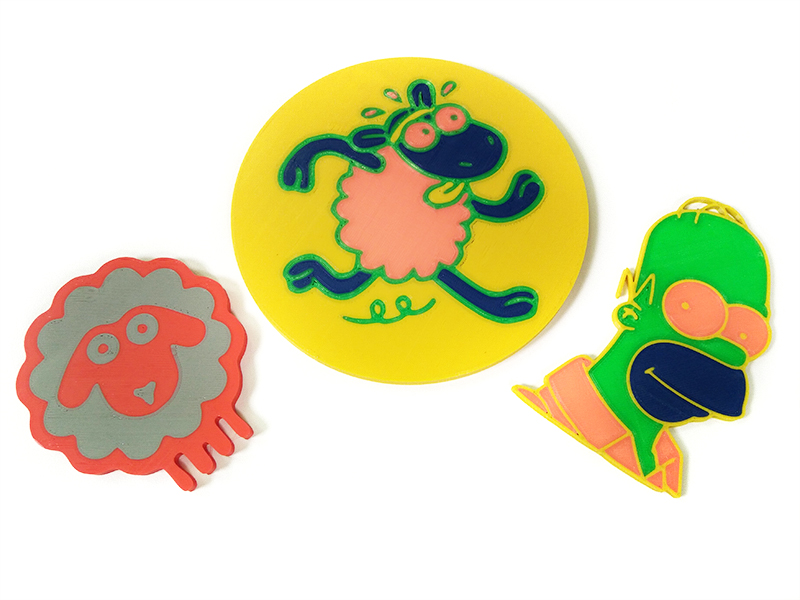
I’m reading an interesting story from Prusa Printers that reveals a rather shocking fact about 3D printer filament.
Prusa Printers markets kits and assembled versions of the famous Prusa i3 desktop 3D printer open source design, created by Josef Prusa himself. Now his company helps everyone have inexpensive access to this well-thought-out design.
But the company hasn’t stopped by simply shipping machines. No, they’ve continually provided highly functional – and affordable – upgrades to their equipment over the past few years. It seems that if you purchase a Prusa, you’re really getting on a long term upgrade train that keeps your equipment current.
One of their most ambitious upgrades was their multi-material option. This is a simple design to permit the use of up to four (yes FOUR) filaments simultaneously on a single print job.
The concept is similar to what has been done by a few other companies: use a single nozzle but feed it from four filament sources. This approach has a significant advantage in that there is no multi-nozzle calibration required. In earlier milt-nozzle machines, the print quality would suffer (or even fail entirely) due to slightly misaligned nozzles. No such problems can occur on the Prusa multi-material models.
But as you might imagine, it is a challenging design to implement. One feature in particular that is required for this to work is the ability of each extruder to properly retract its filament from the mixing hot end to permit other filaments to move forward. The retraction is quite a bit more lengthy than is required on single material setups.
During their development phase, Prusa engineers discovered a design issue in the third party hot ends they were using in the machines. Perhaps I should not say it was a design issue; these hot ends (actually E3Ds) work extremely well as single material components. Prusa’s design was using them in a way that perhaps was not in the E3D’s original requirements.
Anyhow, to counteract the problem, Prusa engineers added 1.85mm stainless steel tubes to their multiplexer that feeds directly into the hot end.
The tube diameter, 1.85mm, should be fine, as the filament is 1.75mm, correct?
Well, not always. Filament manufacturers typically post tolerance specifications that might say the filament is within “0.05mm or less” of 1.75mm. That would be, by my arithmetic, 1.70 to 1.80mm, both fitting easily into the 1.85mm steel tubes.
Nope.
Prusa discovered a dirty secret about 3D printer filament. They explain:
Our team and external beta testers were very lucky with the first tests and the filaments. But spending more time on this, the truth is no filament we’ve tested is good enough for the 1.85mm steel tube. Majority of spools from every manufacturer have little defects with larger diameter. You normally never experience issues with regular printer as the 1.75 hotends are drilled out to 2 mm.
There is no way around this. Especially if you would want to use the filaments you already have and mix spools from manufacturers. There is always a little imperfection somewhere inside jamming the precise tube. Moreover with 4 materials, you use 4 different spools. If only one of the 4 spools has a small imperfection, a print is ruined.
It seems that filament tolerance specifications are sometimes exceeded. The manufacturers of 3D printer filament apparently target those tolerances but don’t always get there.
It’s almost impossible for filament users to know this, as their equipment typically uses 2mm openings for the 1.75mm filament. So it’s possible to be less than perfect on the quality without anyone noticing.
But thanks to Prusa’s interesting discovery, we now know that filament does not necessarily match the specifications on the box.
It also may imply that poor quality filament that jams in your machine may be even worse than previously thought.
Via Prusa Printers

